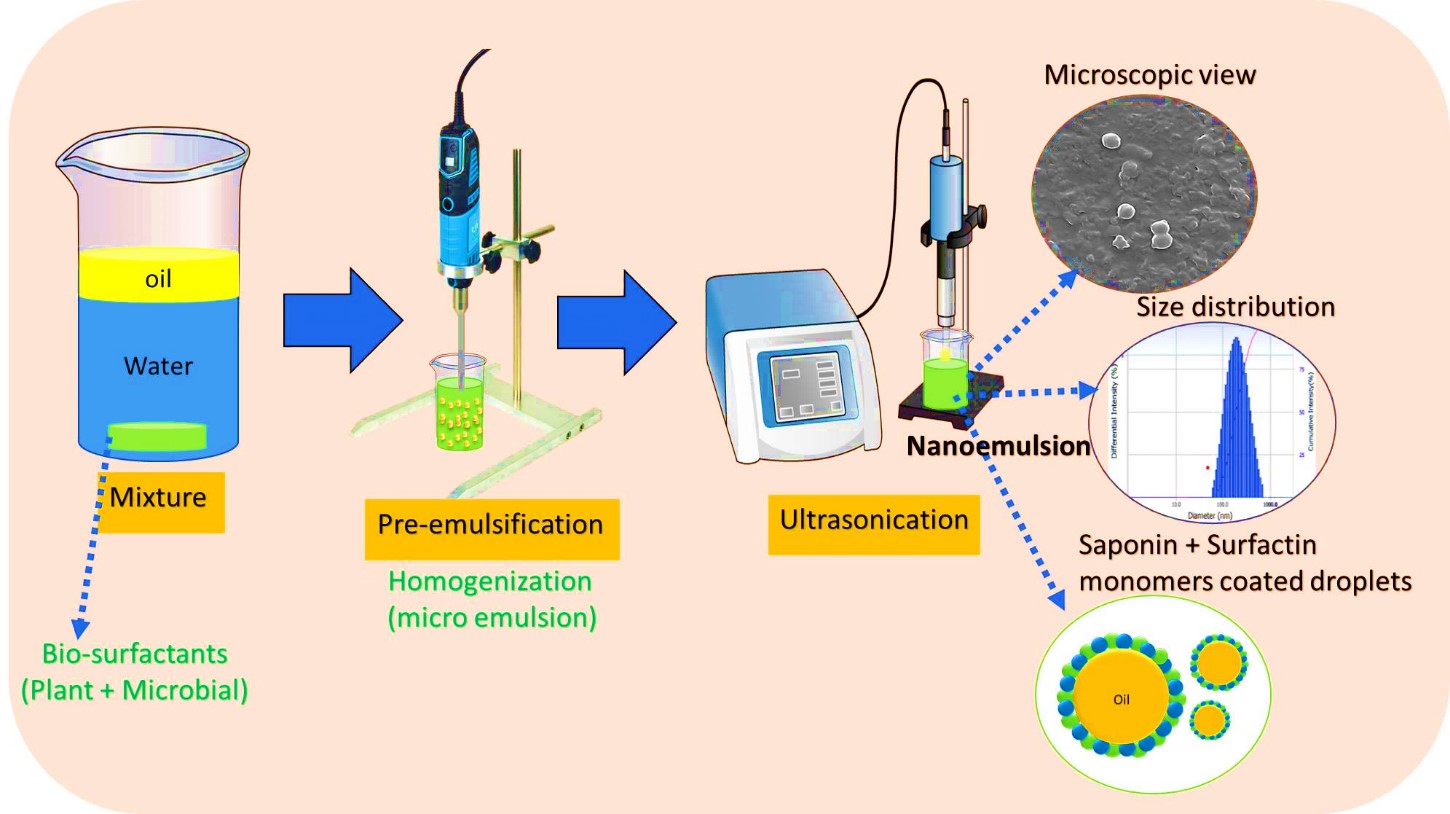
A Biosurfactant cocktail- based formula for the formulation of stable skin-care cosmetic nanoemulsion
Rishi Devendra Singh, Neela Gayathri Ganesan, Vivek Rangarajan
Том 85 №3
303 просмотров;
Amongst the three fundamental components of a skin-care cosmetic emulsion, namely, oil, water, and emulsifiers (mainly surfactants), naturally derived alternatives to synthetic surfactants are yet to be utilized to their fullest potential, owing to their satisfactory properties like CMC, HLB, and CPP. Currently, there are no significant efforts towards green emulsions involving one or more biosurfactants, while significant combinations in varying proportions of their chemical contemporaries exist in the literature. The present study focuses on formulating a stable nanoemulsion system using a cocktail of a plant-derived surfactant (Q. Saponin) and a microbial-derived surfactant (Surfactin), using coconut oil as a base oil. With a limited understanding of the behavior of mixed biosurfactant systems and their underlying interactions, most essentially the interactions between different hydrophilic moieties such as a cyclic peptide group of surfactin and oligosaccharides of Q. Saponin, the primary focus of this study is to tune up the composition of biosurfactants that results in a stable nanoemulsion. A high-energy ultrasonication method was employed to formulate the emulsion, and hierarchical-based screening of various combinations led us toward an optimal combination of composition and operating conditions. Six samples were identified as better among the 20-sample set, and their stability was tested for 45 days. However, based on the optimal energy consumption and oil-to-surfactant (O/S) ratio, sample 6 of cluster 5 was identified to be the best amongst the samples with a mean droplet size of 173 nm, PDI of 0.195 along with a zeta potential of -64.98 mV. Stability analyses involving heat, salt, pH, and centrifugation tests proved the stability of the best-performing sample. This study can be a precursor to future formulation using mixed micellar systems.